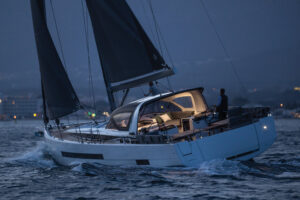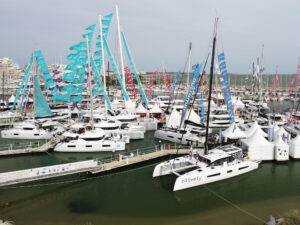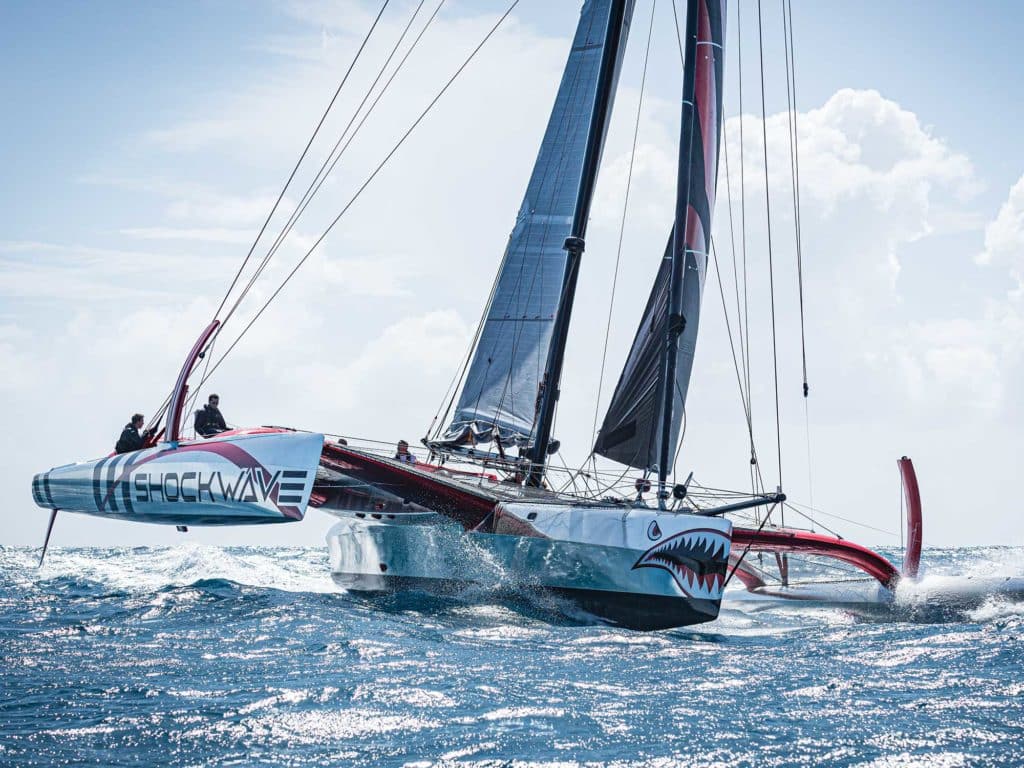
There is a sound in the world of sailing unlike any other, one experienced (thankfully) by a small, select group of sailors, most of them elite, competitive racers in the thick of action on some of the lightest, fastest, most innovative boats on the planet. I’d never heard this particular noise, at least not up close and personal, until I found myself in the cockpit of the amazing 63-foot trimaran Shockwave late last winter on a very windy race around the Leeward Island of St. Maarten. In a side gig as the press officer for the second running of the Caribbean Multihull Challenge, I’d been invited aboard for the day to do my daily race report, and about a third of the way through a race around the island, was basically hanging on for dear life, and in awe of both the boat and its very talented crew.
And then, suddenly and with zero warning, there was a loud crack overhead, a shocking moment aboard Shockwave. It was the unmistakable reverberation that carbon fiber makes when it suddenly, totally, completely fails. It’s something—trust me—you never want to hear on a Grand Prix yacht pounding upwind knocking off double-digit boat speeds in a wavy Caribbean seaway.
Then, after a brief moment of raised voices and general confusion, it all got very calm and even quiet. It was the low hum of a race being quickly, irreversibly over. And the controlled buzz of a boat being rapidly taken care of.
A new noise. The sound of having been silenced.
Shockwave had come a long way to have the brakes applied so suddenly and unexpectedly. In fact, she’d traveled some 4,595 nautical miles to the islands on an almost nonstop, maniacal delivery after a major refit in San Diego to begin her inaugural season of racing under a new syndicate comprised of owner Christiaan Durrant, skipper Jeff Mearing, co-skipper/program manager Scott Klodowski, navigator Nils Erickson and a crew of fellow passionate sailors.
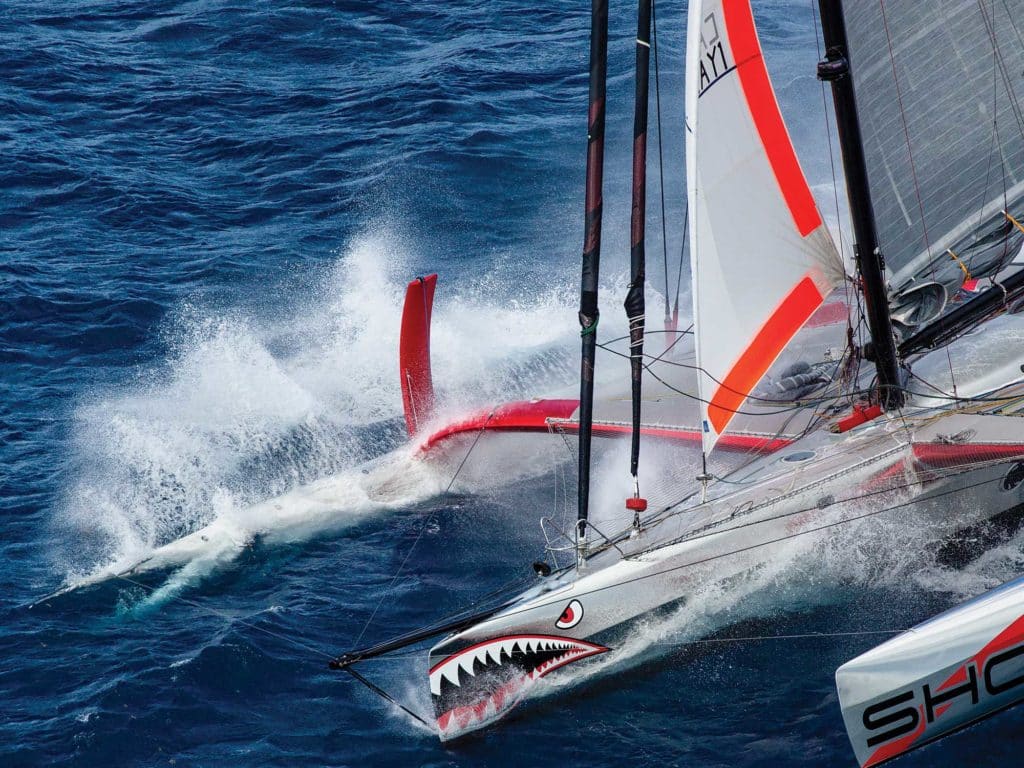
Originally designed by the noted British multihull naval architect Nigel Irens, Shockwave was previously called Paradox, a name reflective of its dual purpose as a flat-out ocean racer also capable of occasional cruising, with a 75 hp Volvo diesel with saildrive, and a relatively comfy interior for a racing trimaran with decent berths, a proper head and an induction stove. There was even air conditioning—a luxury installed for steamy anchorages when cruising, but also so the off watch could get proper rest on long oceanic races in tropical conditions. Klodowski gave me a quick tour before heading out to the racecourse that revealed seriously robust, all-carbon construction. Shockwave was built to go places. Fast.
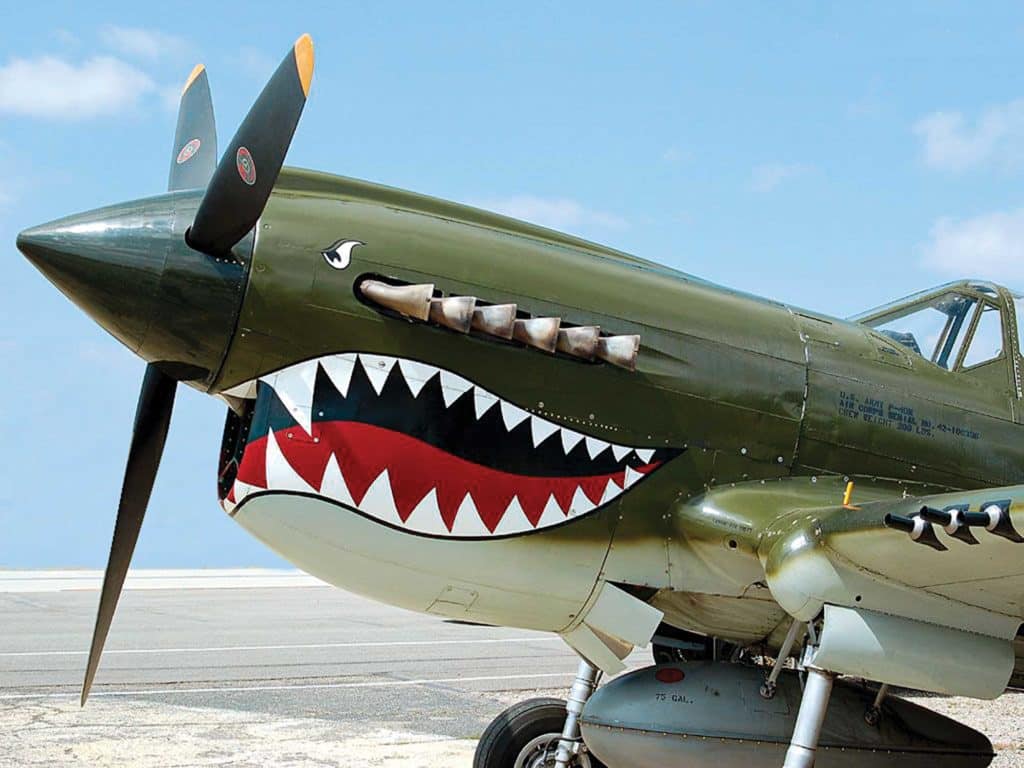
It turned out Klodowski and Durrant were old mates who’d done a lot of ocean racing together, much of it on a 35-foot catamaran. A pivotal moment in their shared careers occurred after getting pasted in the 2017 Rolex Middle Sea Race, a 600-nautical-mile lap of Sicily that begins and ends in Malta. It wasn’t the first time they’d been creamed, and they came to the same conclusion: “We need a bigger boat.” Hence, Shockwave.
Durrant is a hyperfit Aussie, who, before becoming an international businessman, had played rugged Aussie Rules Football and spent 14 years as a fighter pilot in the Australian Air Force. Like many of his countrymen, he’d fallen hard for sailing as a 13-year-old in 1983, when the Aussies won the America’s Cup and returned home with their prize as national heroes. “Everything I’ve done since then has been high-performance,” he said.
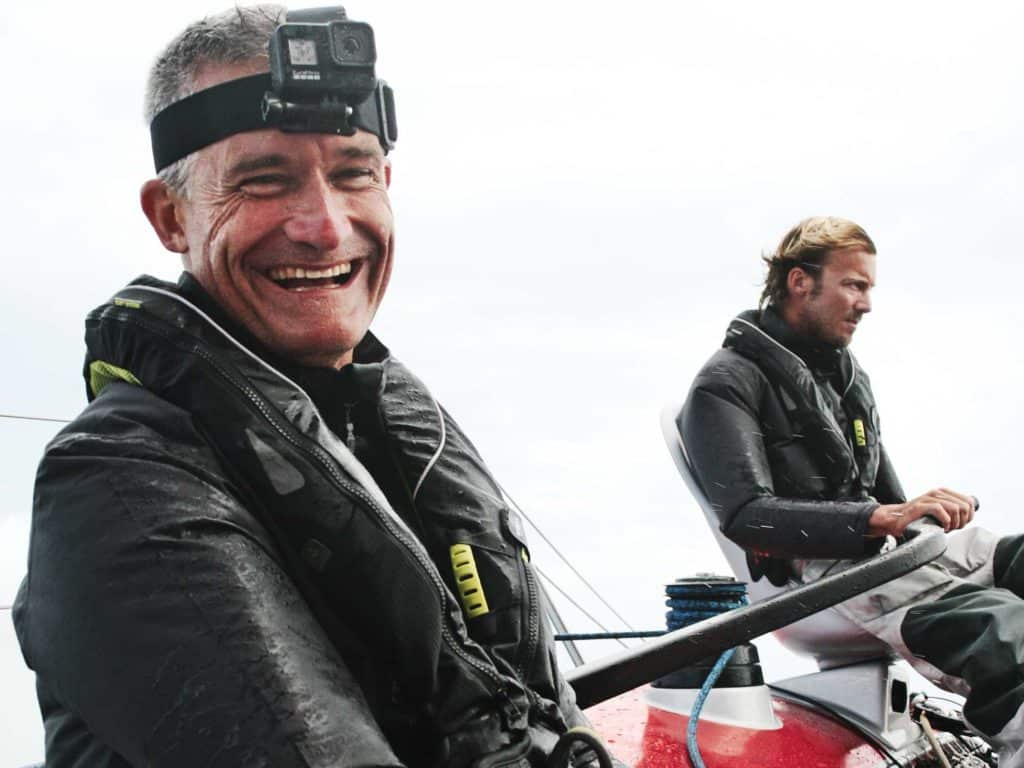
He’d considered buying a larger multihull but felt the slightly more modest Shockwave was a better fit: He could enjoy it with his family from time to time and still sail Grand Prix events with his like-minded mates. No, Shockwave would never snatch first-to-finish-line honors in major races, he admitted, but if sailed smartly and efficiently, would always be in the hunt for the podium on corrected time.
As the trade winds seriously kicked in while the fleet assembled for the 0900 starting sequences to commence, it was readily apparent that conditions were going to be, as they say, sporty. The breeze registered a solid 30 knots, with gusts to 32, 35 and eventually 39 knots. This was well beyond the low 20s that had been predicted for the day. “I think the weatherman took the night off,” Durrant said. “He must’ve sent the forecast from the bar.”
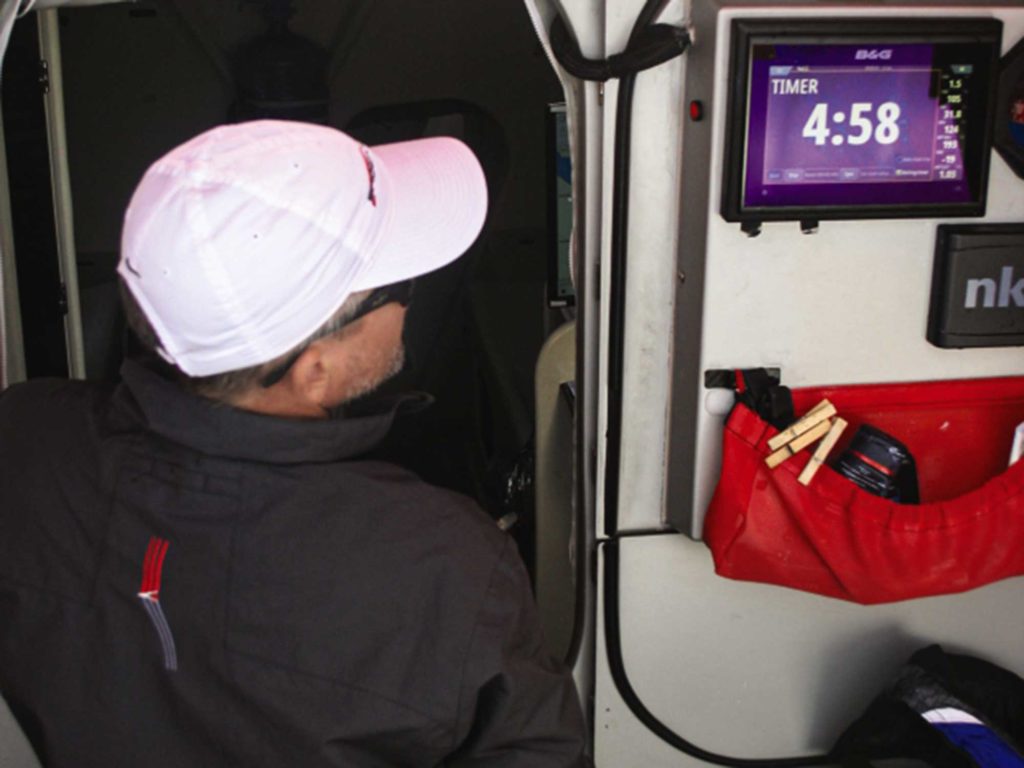
The talk aboard Shockwave was about sail configurations, specifically how small a jib to carry and whether to go with two or three reefs in the mainsail. Skipper Mearing ultimately called for one of the smaller headsails in the inventory and a double-reefed main.
The other classes had already started and cleared the area when the countdown for the MOCRA Multihull class—along with Shockwave, it consisted of the powerful MOD 70 trimarans Argo and Maserati—began. All three boats were using the Caribbean Multihull Challenge as a tuneup regatta for the upcoming Caribbean 600, another 600-miler on a challenging course winding through the islands that would start and finish in Antigua. There was some serious star power on the other big tris, particularly Maserati, which was skippered by the legendary Italian sailor Giovanni Soldini, famous for rescuing Isabelle Autissier from her capsized yacht in the Southern Ocean in a solo round-the-world race. Soldini, the saying goes, was as serious as a heart attack. The air was thick with anticipation.
Until, of course, it wasn’t.
With the wind continuing to build, there was a postponement for the race start, then a second one when Maserati radioed to the race committee they had a problem. I know Soldini a bit, and something very messy had to be happening on board for him to make that call. The race committee hailed Argo and Shockwave to see if both boats were OK to postpone, and both readily agreed. Argo, it should be noted, was also a formidable competitor; American skipper Jason Carroll and his all-star crew had served notice to the sailing world after being first boat home in last summer’s 50th running of the iconic Transpac Race from California to Hawaii. As Shockwave’s Erickson explained, the crew of Argo helped Shockwave in Antigua after the boat had damaged its mainsail track on the long delivery, and it was clear there was a strong sense of camaraderie among the competitors. Yacht racing can actually be pretty cool.
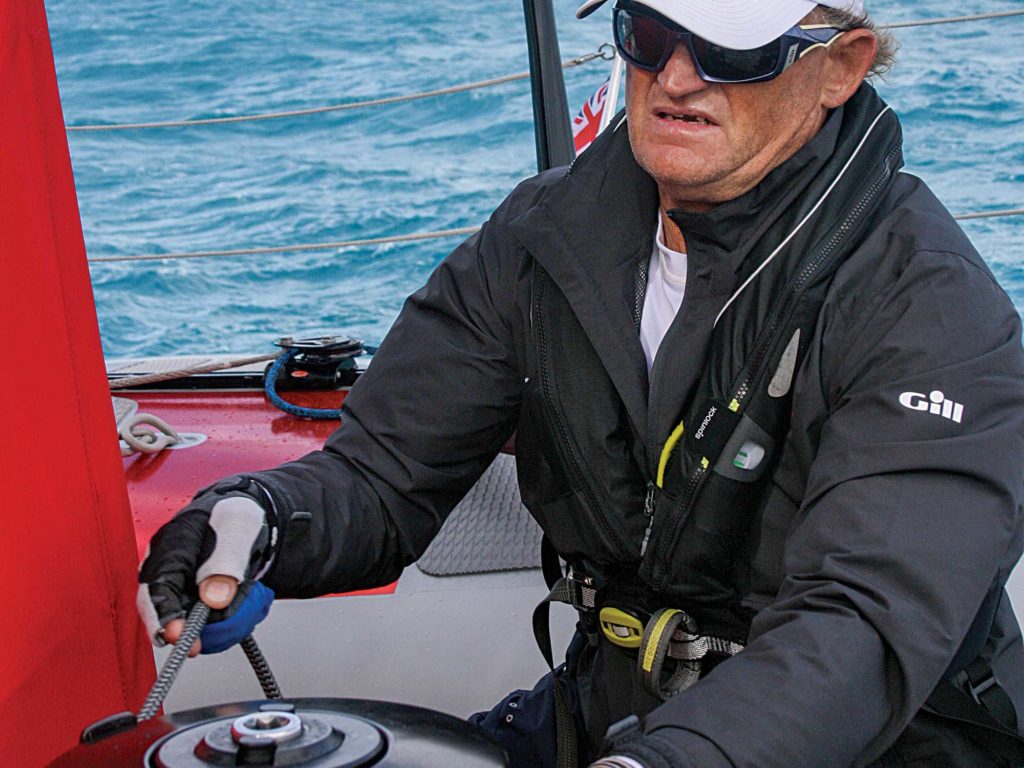
Once the final countdown began, on Shockwave there was a slight moment of hesitation among the six-man crew just before the start, and for the briefest of periods, it seemed that the big tri might be late. But Mearing, steering from a helm station positioned well out on one of the amas—seriously, it was almost like he was on another vessel entirely—pulled the trigger inside of a minute, and Shockwave hit the line perfectly, making better than 20 knots on a power reach to the first mark. Argo, bigger and meaner, scorched past to leeward like we were almost standing still, which we most certainly weren’t. Meanwhile, Maserati, still with seeming problems, lagged behind. Then both leaders rounded the mark and came hard on the breeze for a beat down the southern shores of St. Maarten, the first leg of a long round-the-island race.
And folks, let me tell you, it got wet. And trust me, when the spray comes flying off the amas of a powerful trimaran like Shockwave, it stings. Bigly. It was time to put my camera and notebook away; actually, it was much too late for that, because the camera was totally drenched and the notebook was wet pulp. There wasn’t a dry spot topsides. I could not have been damper if I’d just stepped out of the shower.
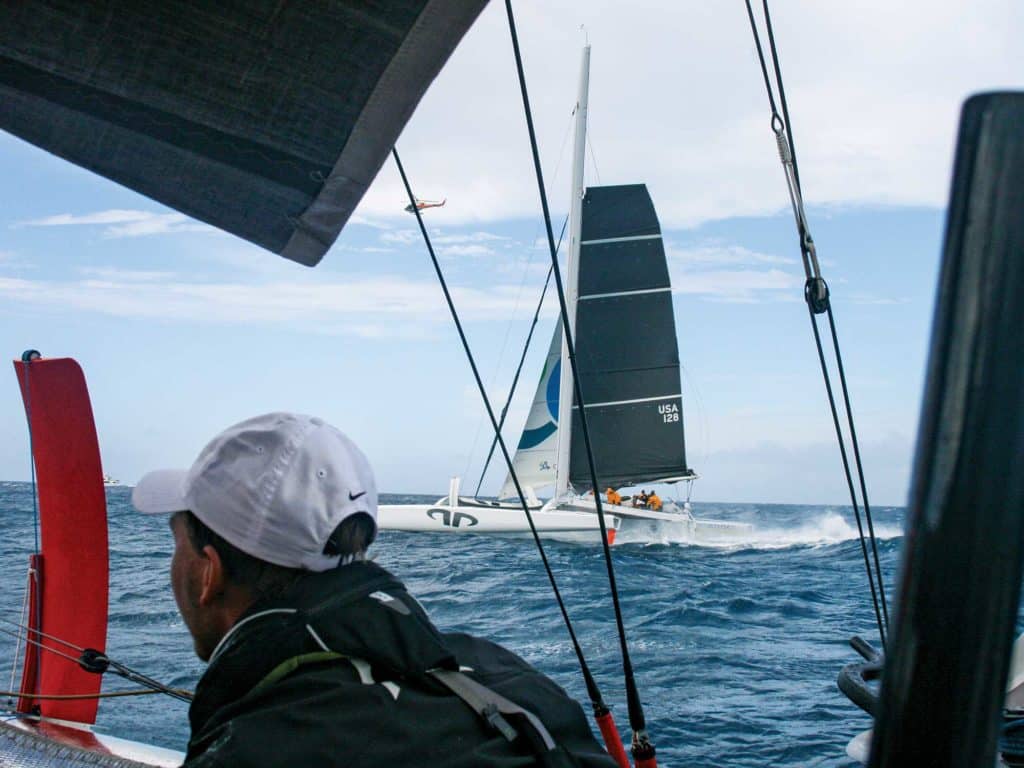
As we turned the corner at the southeast tip of St. Maarten and took aim for the distant isle of Tintamarre—the next mark on the course—all was well; Argo was ahead but in sight, which meant we were right with them on handicap, and Maserati was still in arrears. And then one of the crew said something that stopped everyone cold: “I see sky.” The fact that he was staring at the mainsail was, um, disturbing. The bottom panel was delaminating, deconstructing, whatever. You could see sky.
Team Shockwave quickly went into action to tuck a third reef in the main and minimize the damage. Once the job was complete, the mainsheet was sheeted on hard, and moments later, there was that unmistakable, piercing sound of cracking carbon that could easily be heard over the wind and waves. Shockwave’s boom was in two pieces; it had literally gone boom. The racing, and the regatta, were over.
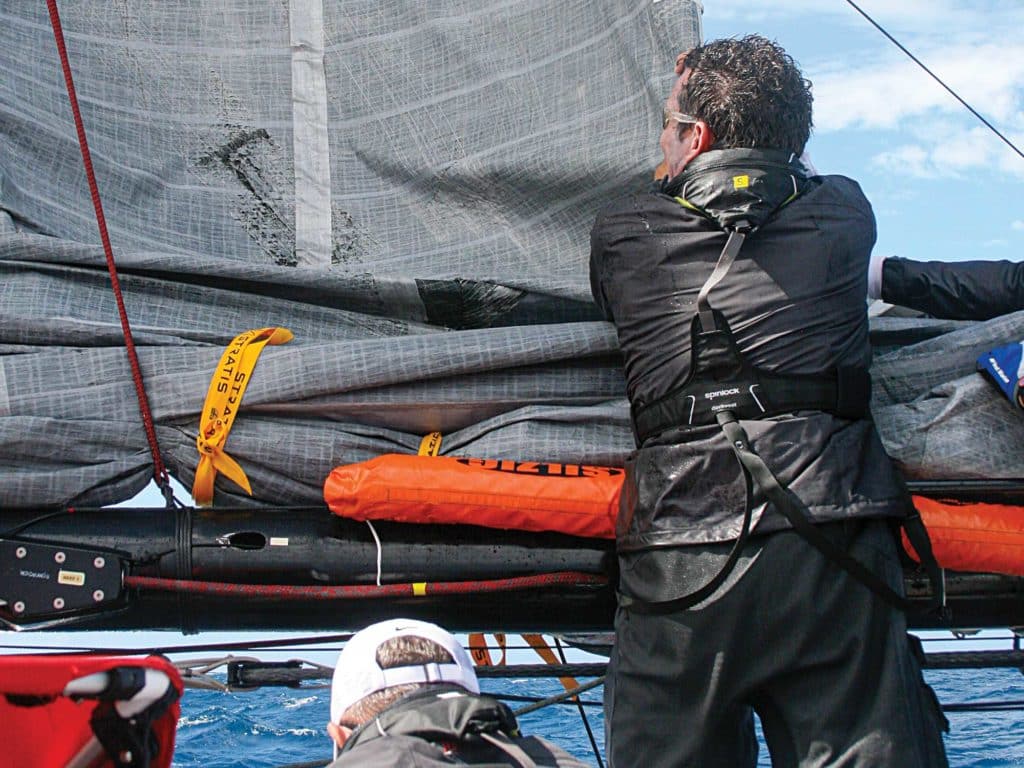
Nobody panicked. If anything, there was more of a collective, reflective sigh. Down came the mainsail. On came the engine. It was a long motor home.
The silver lining was a long chat with Durrant who, despite the day’s unraveling, was positively upbeat. He went so far as to say he was pretty satisfied with how things unfolded, especially his crew’s cool response to adversity. “I built my first boat with my dad as a kid,” he said. “I worked my way up from the bottom rungs of sailing. Everyone on board did. We worked hard to get here. We’re individuals with a lot of passion for sailing. And we’re building a strong team. We showed that today.”
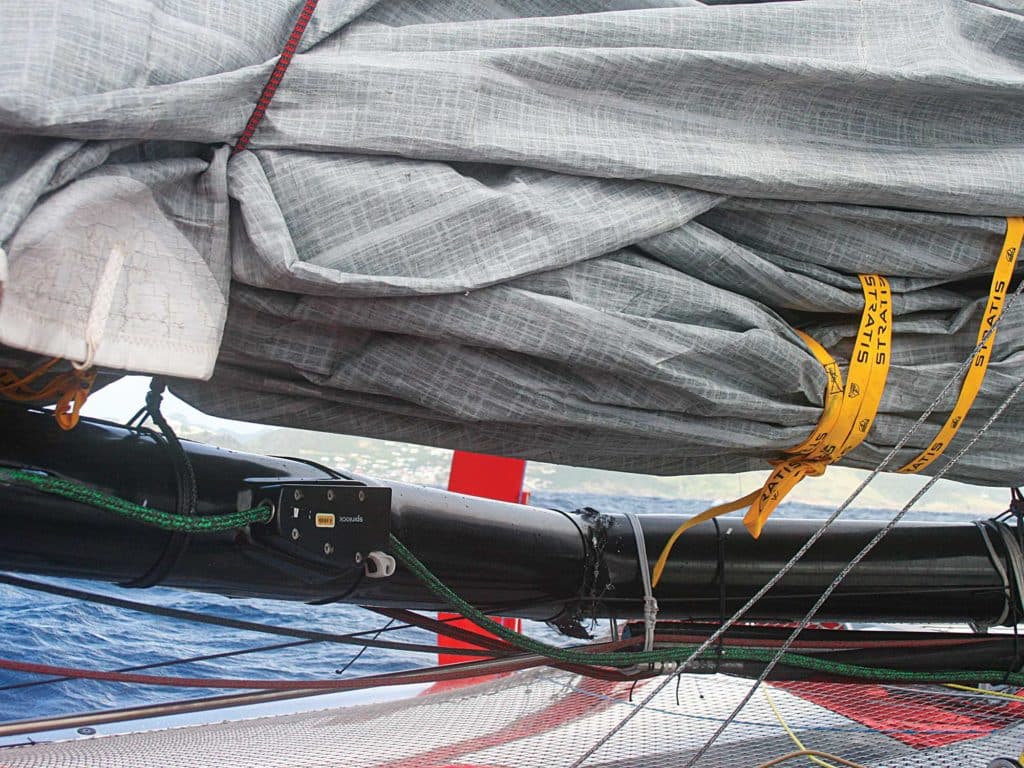
He also had a cool story about the graphic on Shockwave’s bow, which I’d been curious about. In his Air Force days, he flew F-18s, but back in World War II, his same squadron had flown Kittyhawks, with the famous bared-teeth logo on the nose. The symbolism was clear. They came to play, but to play—and fight —very hard.
A week later, having sorted out and repaired the boom in a relative flash, Shockwave was on the starting line for the Caribbean 600, and would ultimately earn a second in the Multihull class, knocking off Argo and Maserati in the process. Given what had transpired so recently in the roiled waters off St. Maarten, the sweet result was, well, shocking.
Herb McCormick is CW’s executive editor.
The Caribbean Multihull Challenge: Sailing On
After two successful runnings, the Caribbean Multihull Challenge is now a solid annual event on the Caribbean’s busy racing calendar. The hosting St. Maarten Yacht Club has announced that the third edition will take place February 5-7, 2021. A celebration of this special section of the sport, the event is open to all multihull sailors on racing and cruising trimarans, as well as chartered cats and cruising multis. For more information, visit the event’s website.

